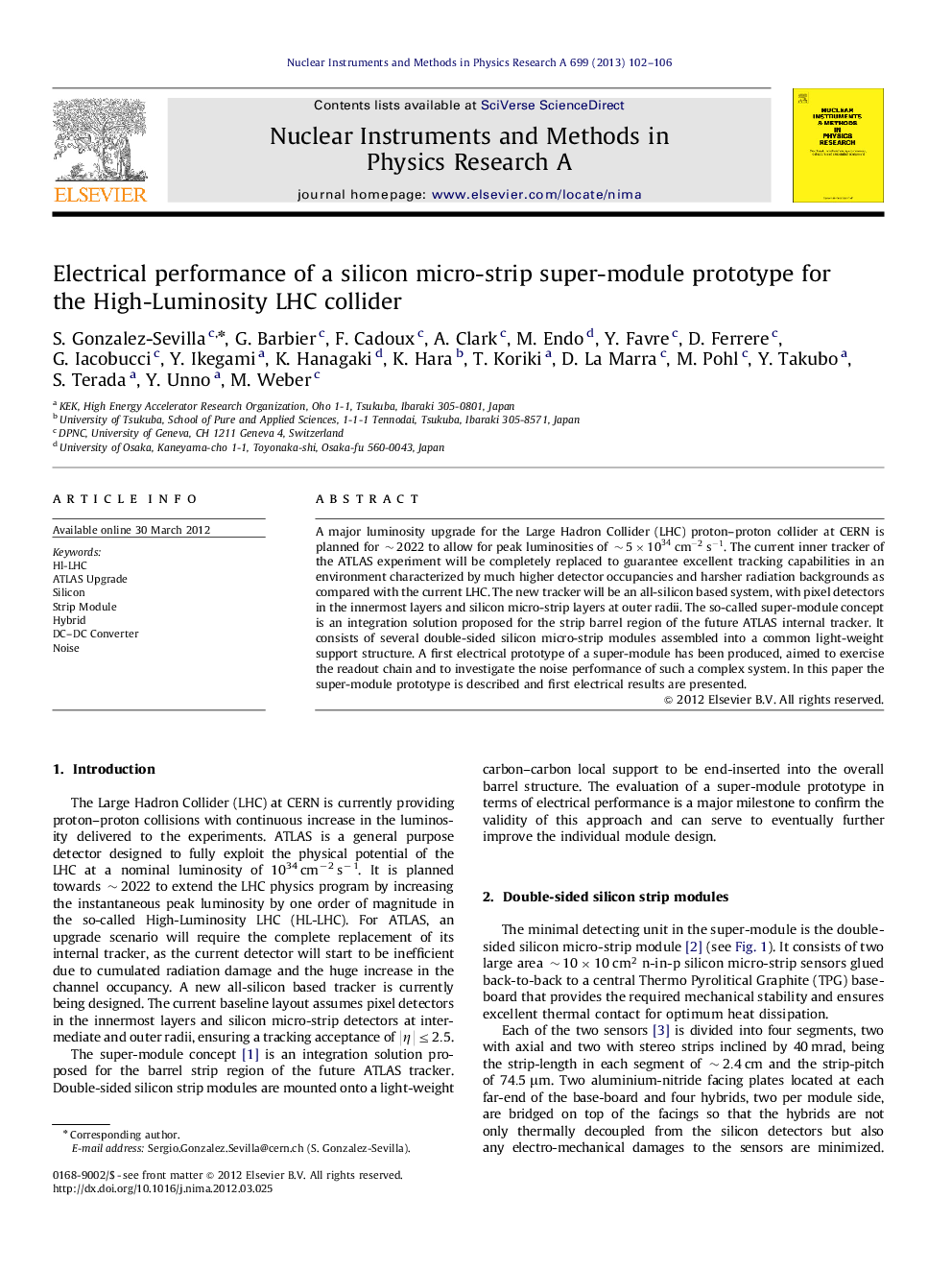| Article ID | Journal | Published Year | Pages | File Type |
|---|---|---|---|---|
| 1823437 | Nuclear Instruments and Methods in Physics Research Section A: Accelerators, Spectrometers, Detectors and Associated Equipment | 2013 | 5 Pages |
A major luminosity upgrade for the Large Hadron Collider (LHC) proton–proton collider at CERN is planned for ∼2022∼2022 to allow for peak luminosities of ∼5×1034cm−2s−1. The current inner tracker of the ATLAS experiment will be completely replaced to guarantee excellent tracking capabilities in an environment characterized by much higher detector occupancies and harsher radiation backgrounds as compared with the current LHC. The new tracker will be an all-silicon based system, with pixel detectors in the innermost layers and silicon micro-strip layers at outer radii. The so-called super-module concept is an integration solution proposed for the strip barrel region of the future ATLAS internal tracker. It consists of several double-sided silicon micro-strip modules assembled into a common light-weight support structure. A first electrical prototype of a super-module has been produced, aimed to exercise the readout chain and to investigate the noise performance of such a complex system. In this paper the super-module prototype is described and first electrical results are presented.
► A first electrical prototype of a super-module for the ATLAS upgrade in the HL-LC has been produced. ► The full readout chain has been exercised. ► Studies to mitigate EMI emissions has been performed. ► First electrical results have been obtained with four double-sided strip modules installed in the super-module.
